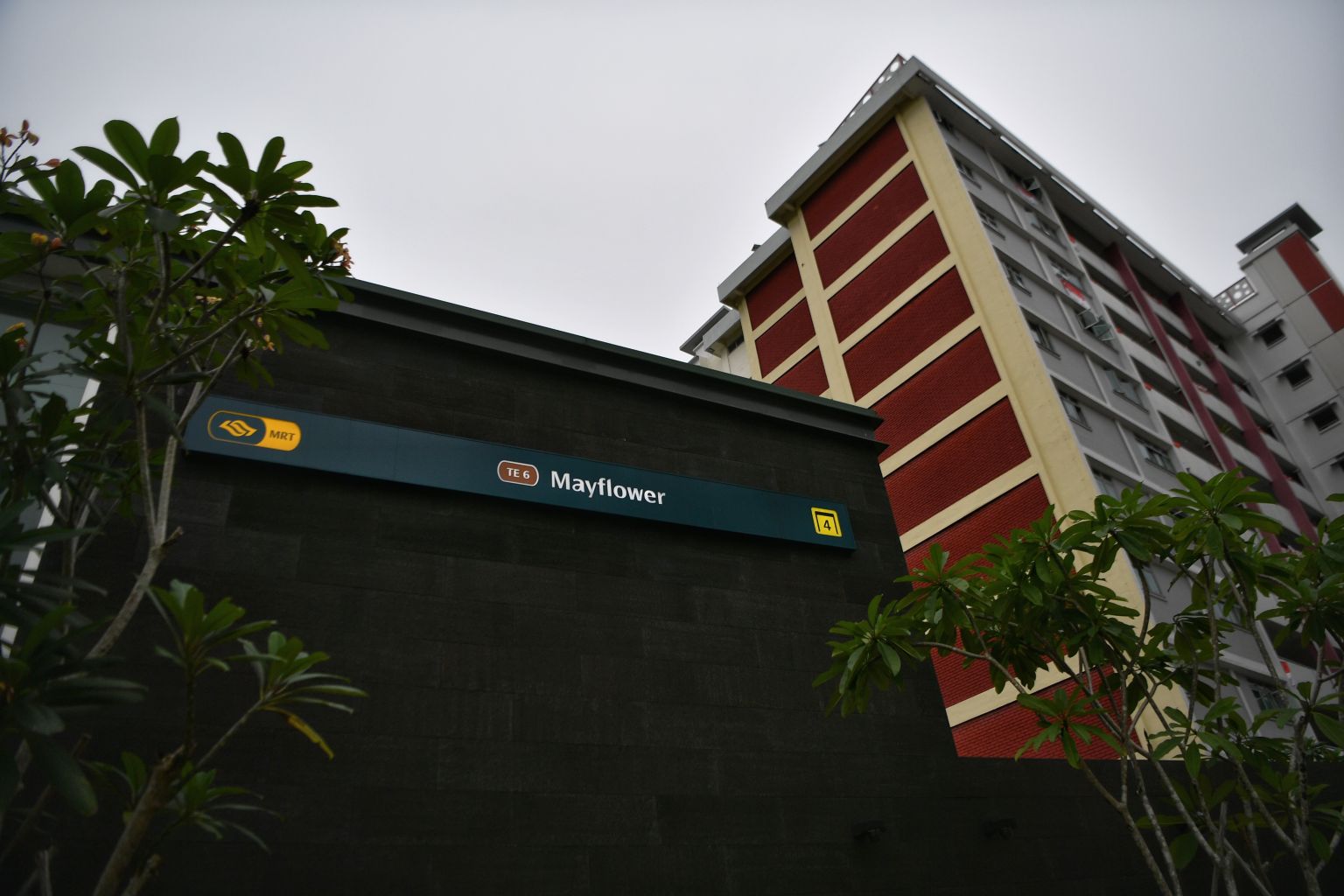Signs at MRT stations to be upgraded to make them more user-friendly
Sign up now: Get ST's newsletters delivered to your inbox

New signs will have larger fonts and exits indicated by numbers instead of letters.
ST PHOTO: ARIFFIN JAMAR
Toh Ting Wei
Follow topic:
SINGAPORE - Commuters will find it easier to make their way around all MRT stations in time to come, with signs at stations to be improved to make them easier to understand.
For example, the new signs will have larger fonts and exits indicated by numbers instead of letters.
These signs have been installed at the Thomson-East Coast Line (TEL). They will also be in new MRT stations in the future.
The Land Transport Authority's (LTA) senior group director of rail, Mr Sim Wee Meng, said: "A lot of old folks say our signs are cluttered, and that when they try to look for the station entrances, it's actually very challenging.
"Our entrances used to be labelled A, B, C, D. And the feedback was that some people can't read English, so we decided to use numbers instead since it's a universal language."
He said LTA will upgrade the signs at MRT stations that have more than one line, such as Caldecott, which serves both the TEL and the Circle Line. For the remaining stations, LTA will find a suitable time to upgrade all of them, he said.
The 67-year-old, who has almost 40 years of experience in the rail industry, said that the focus on improving commuter experience is one of the additions to rail builders' remit since Singapore built its first MRT line in the 1980s.
He had joined LTA's predecessor, the Mass Rapid Transit Authority, in 1983, He has been involved in rail projects here since, starting with the construction of the first MRT stations from Yio Chu Kang to Toa Payoh on the North-South Line.
Mr Sim said the key priority when building the earliest stations was to meet the necessary safety requirements.
But, over the years, beyond improving commuter experience, Mr Sim said, engagement of stakeholders such as residents has become a critical task.
"The more MRT lines we build, the nearer we are getting to shops, condominiums and houses, so that's why we have to carry out more outreach," he said.
"Sometimes when people see the heavy machinery so close to their house, they are also worried. So we have to go to explain to them that there are precautions in place."
From an engineering perspective, the difficulty of constructing MRT lines has multiplied as well. This is due to growing space constraints.
For example, engineers have to divert more underground telecommunications cables, power cables, sewage pipes and water pipes to build new rail lines.
"In the early days, we can get it done sometimes in six to seven months... but generally diversions take in the region of 18 to 30 months now," said Mr Sim. He noted that the shortage of construction workers due to the Covid-19 pandemic has also contributed to delays in these works.

As more rail lines are built, engineers also have to make space by building tunnels and stations deeper, he added.
On what his expectations are for the future MRT system 30 years down the road, Mr Sim said it is unlikely there will be drastic changes.
He said the MRT tunnels are built to last about 100 years. This means that even the oldest North-South and East-West lines will still be able to run for a long time, given that they have been in operation for about 30 years, said Mr Sim.
"We will buy new trains to change out the old trains at the end of their life cycles... but it's still a train running in the tunnel," added Mr Sim.
"But I think modern technology will ensure there are more safety features compared to what there are in the past."

